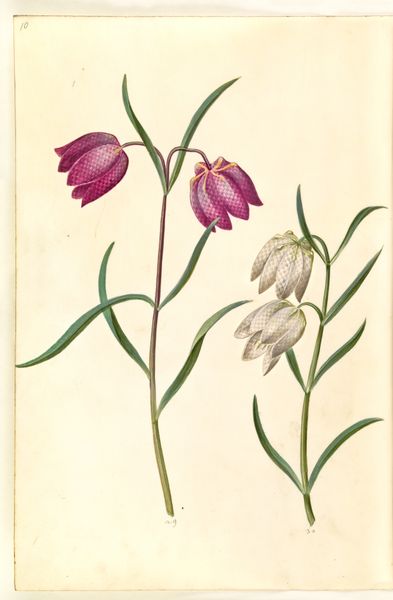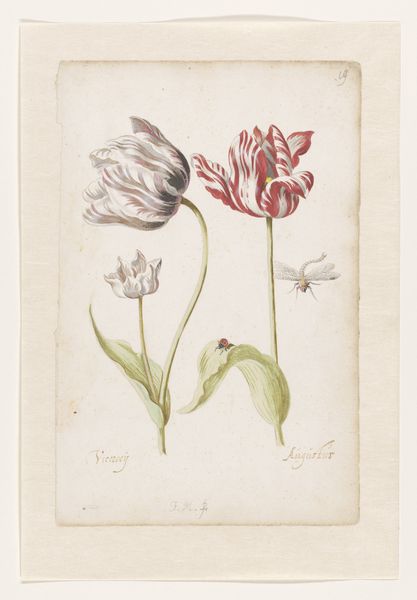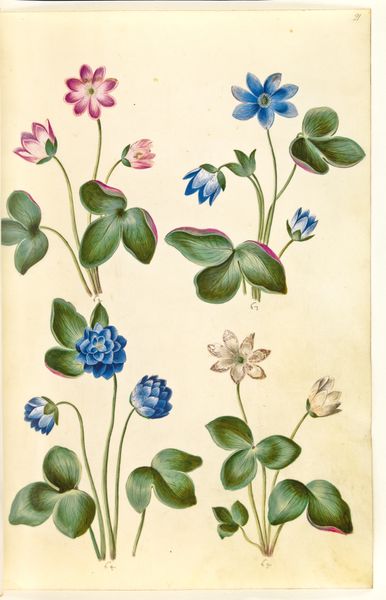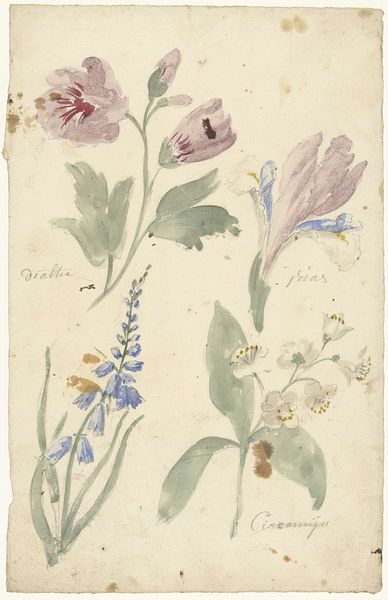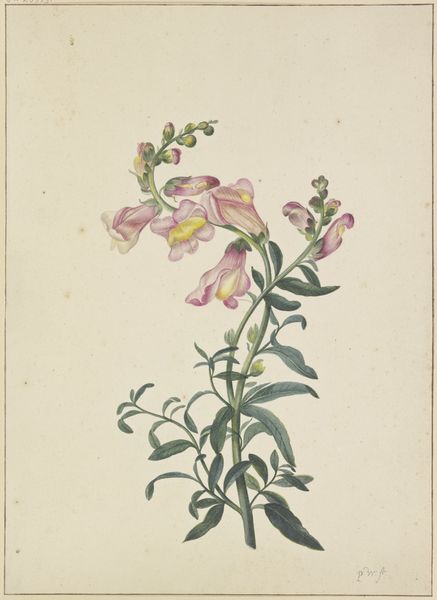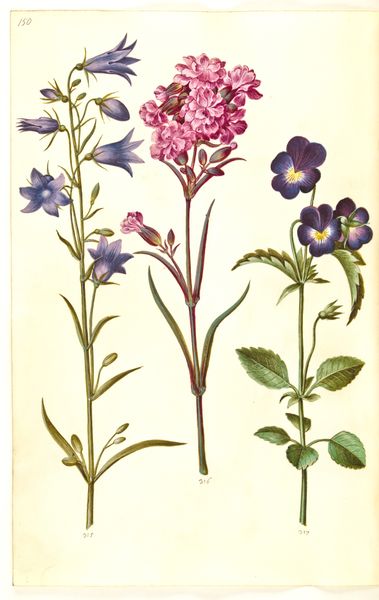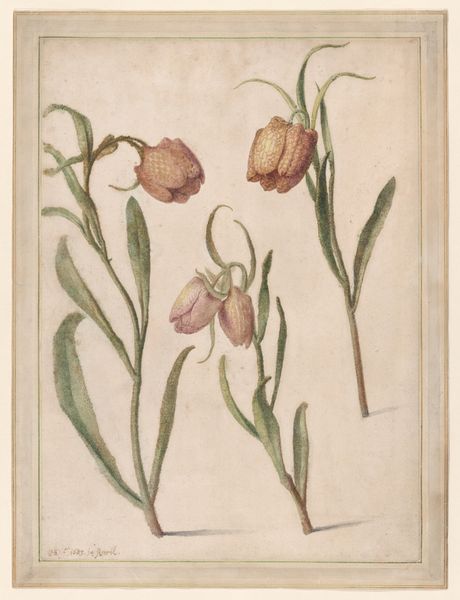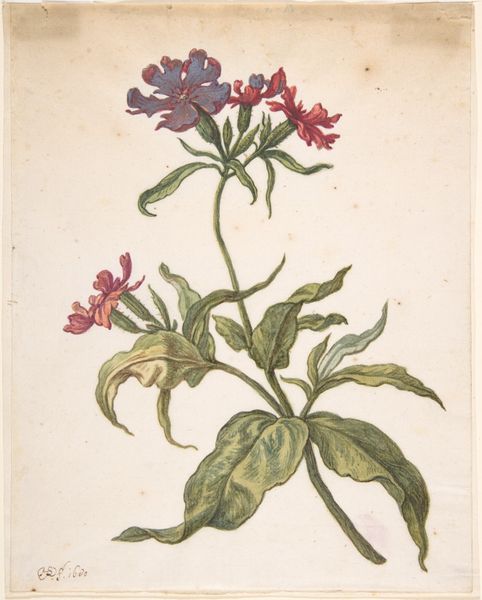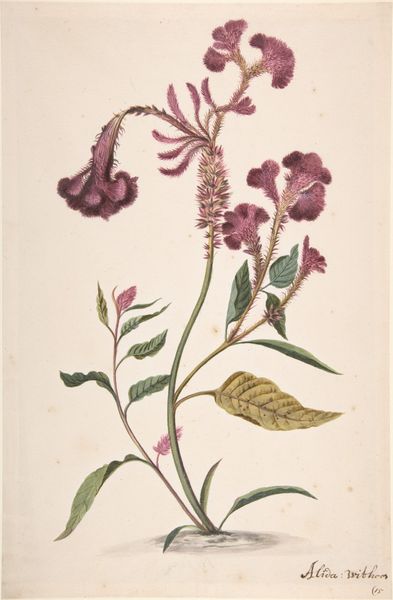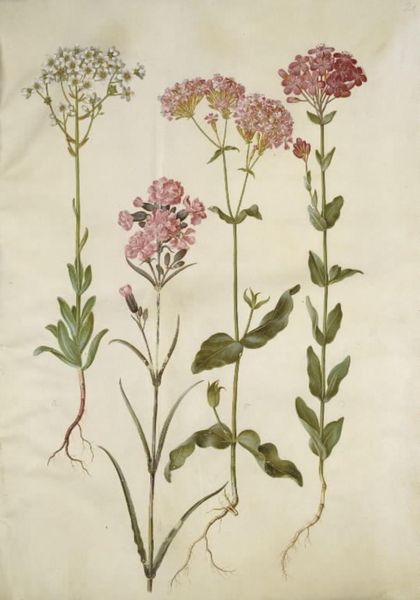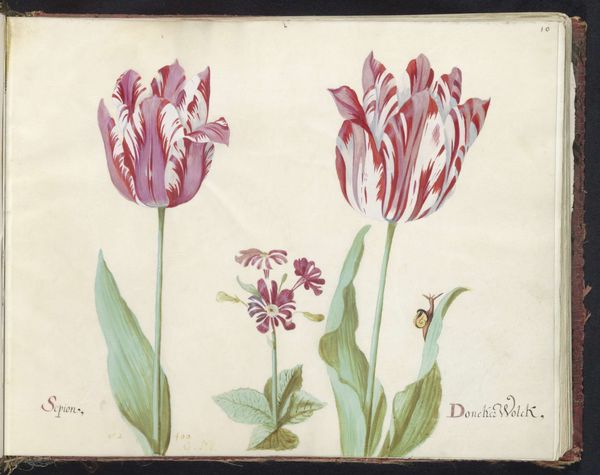
A Sheet of Studies of Flowers: A Rose, a Heartsease, a Sweet Pea, a Garden Pea, and a Lax-flowered Orchid 1528 - 1588
0:00
0:00
drawing, print, watercolor
#
drawing
#
water colours
# print
#
watercolor
#
northern-renaissance
#
realism
Dimensions: 8 5/16 x 5 7/8 in. (21.1 x 15 cm)
Copyright: Public Domain
Curator: What a charming array! We’re looking at "A Sheet of Studies of Flowers" by Jacques Le Moyne de Morgues, made sometime between 1528 and 1588. It features a rose, a heartsease, sweet pea, garden pea, and an orchid, rendered in watercolor and likely intended as a study for later works. Editor: I'm immediately struck by its quiet precision. It feels almost scientific in its detail, but with this incredibly delicate hand. There’s an air of the garden’s fleeting beauty, captured in watercolor. Curator: Indeed. Le Moyne de Morgues was a Huguenot, and his career took him across Europe. His botanical illustrations were part of a broader trend in the Renaissance, fueled by exploration and a burgeoning interest in the natural world. They were intended for the plates of the printed books about the “New World." Editor: Interesting… So these floral depictions functioned as scientific documents? It's hard to ignore how each plant is painstakingly rendered with watercolor and, based on this careful work, I’m also tempted to read it through a lens of artisanal labor and consider its historical value in commercial markets. Curator: Precisely! These types of studies played a vital role in understanding and documenting plant species, informing botanical knowledge and even impacting medicinal practices and horticultural developments in that time. They were critical in sharing data to distant populations. Editor: I notice how the materiality of watercolor gives a certain softness and fragility to these plants. How different from an oil painting. And this, of course, reflects how drawing, painting and printing worked as crucial technologies for recording the new colonies and creating accessible imagery. Curator: I completely agree, but what also fascinates me is the role these images played in shaping European perceptions of other continents. It wasn't just about documentation. They carried cultural weight and even implied colonial narratives. Editor: Right, that speaks to how seemingly benign imagery like these flowers became a form of early visual imperialism. The control of rendering—and later of printing—technology translated into symbolic power. Curator: Looking at this study now, through these layers of historical and material understanding, makes it far more poignant. It reminds us that even the gentlest art can hold complex social and political stories. Editor: Absolutely, recognizing the process by which these natural images were produced in the northern-Renaissance emphasizes their impact. Thank you.
Comments
No comments
Be the first to comment and join the conversation on the ultimate creative platform.
